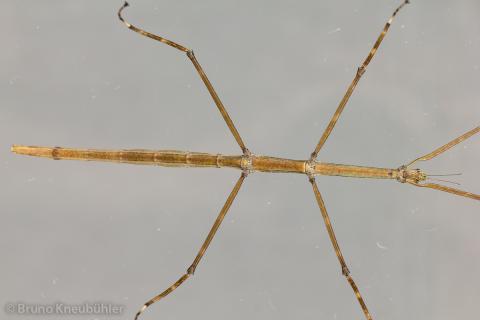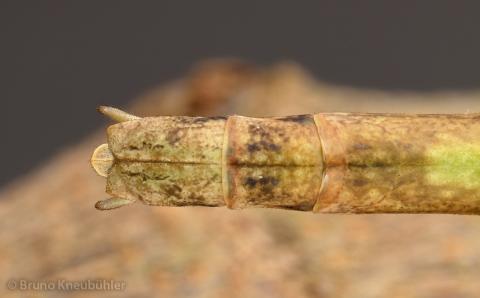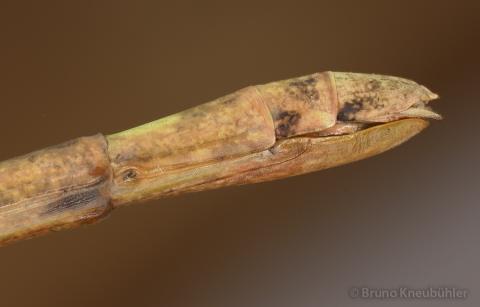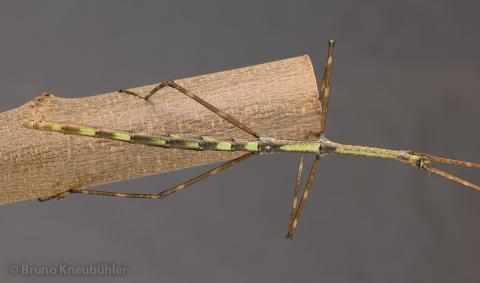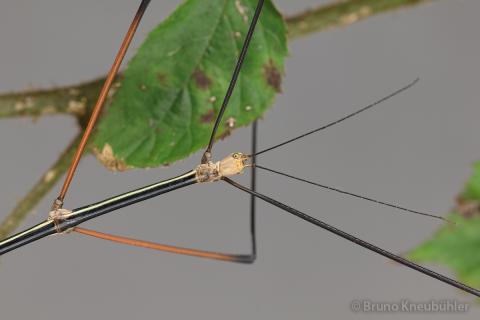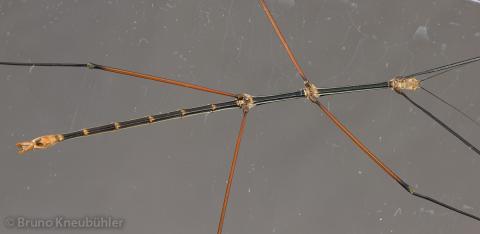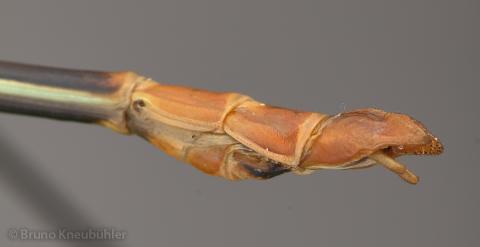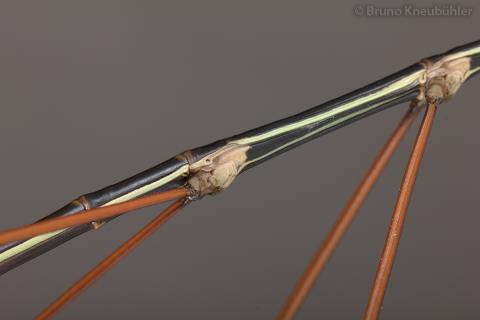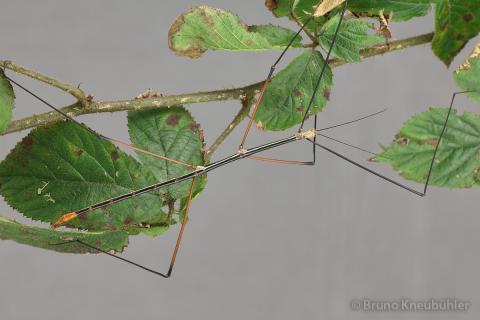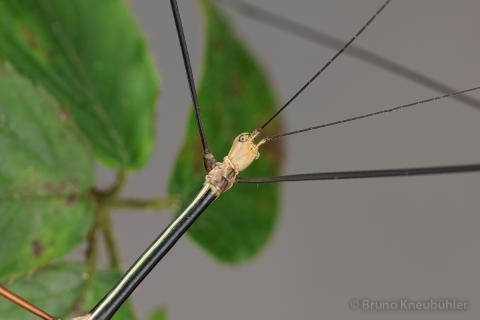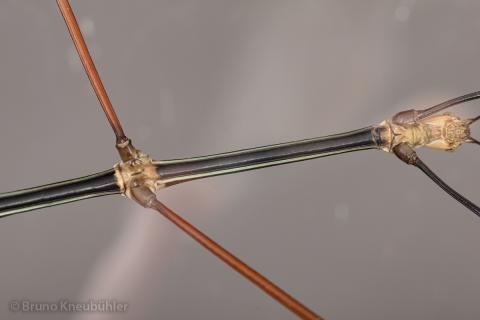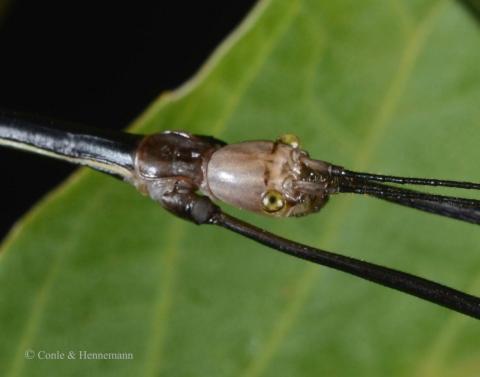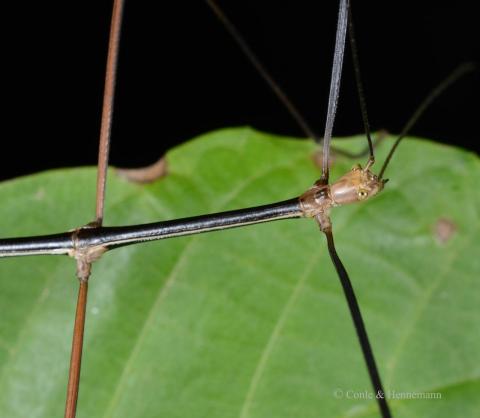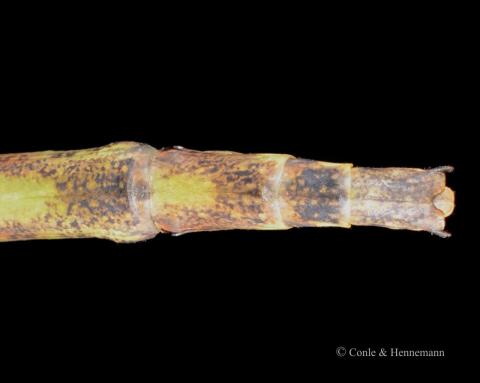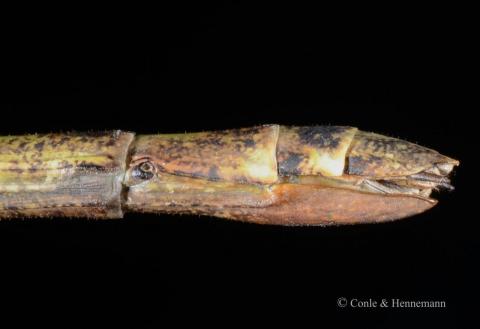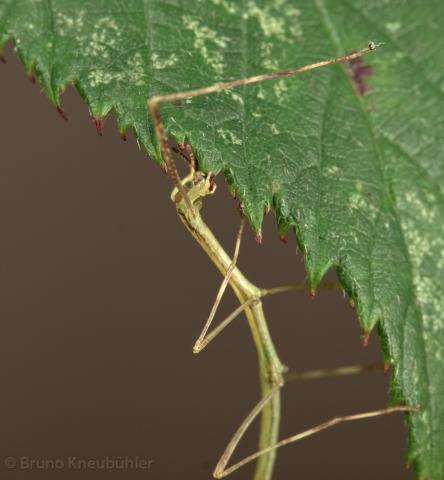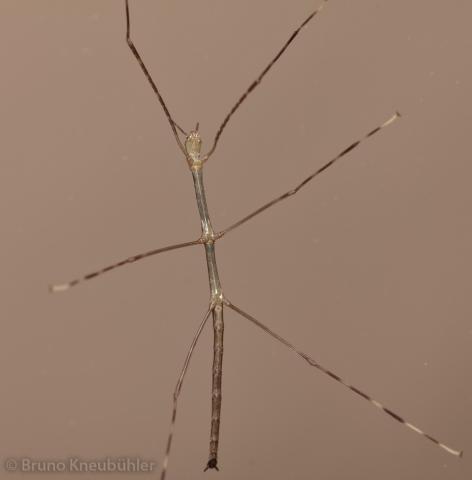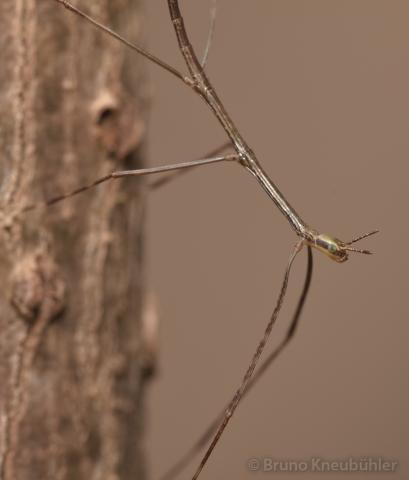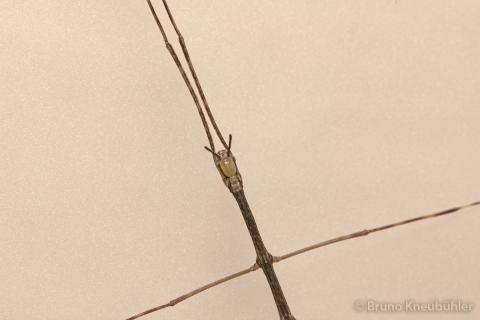
Genus
Species
Stock
CLP
540
PSG
157a
Culture status
In culture
Foodplants
Bramble (Rubus spp.)
Breeding notes
(by Bruno Kneubuehler)
General Notes
- 2012 – this species is under taxonomical examination by Joachim
Bresseel (Belgium) - 2012 – this species is quite similar to Ramulus sp. PSG No. 157
(which is from Vietnam too, but no more exact origin is given).
But coloration is somewhat different, especially in males. Thus
these might be the same species, yet different color variations.
Therefore these two cultures should be kept strictly seperate ! - 2012 – first successful culture by Bruno Kneubuhler
- 2012 – this species has been distributed as Ramulus sp. „Tam Dao"
_________________
Origin
- Tam Dao, Vietnam
_________________
Females
- inconspicuous, typical phasmids
- about 13 – 14 cm
- coloration is rather uniform amongst females, just some females have more green
- upper side (dorsally) – green areas alternate with dark brown areas
- lower side (ventrally) dark brown
- very short antennae, just slightly longer than the head
- no wings (apterous)
- sbugenital plate not longer than the abdomen
_________________
Males
- very typical for this genus, very thin and seemingly fragil
- about 11.5 – 12 cm
- coloration is rather consistent amongst males
- body color is black
- thin, yellowish-white stripes on alongside the whole body sides (laterally)
- abdominal ending is reddish-brown
- head and area of leg joints is greyish-brown
- fore legs are dark brown
- mid- and hindlegs have reddish-brown thighs (femora), while the rest is dark brown
- short antennae
- no wings (apterous)
_________________
Nymphs
- lenght (L1) about 16 mm
- coloration (L1) green-brown with a darker stripe across the eyes
- antennae short and brown
- older nymphs are mainly dark or even black, with many white dots
- by L3 or L4 it is quite easy to draw a distinction between ♀♂ (by the naked eye)
_________________
Eggs
- very typical for the genus
- about 4.5 x 1.5 mm
- brown, some eggs with darker patterning
- long, almost rectangular and flat
- matt
- no distinct capitulum present
- fringe-like structures around the lid (operculum)
_________________
Food Plants
- bramble (Rubus sp.)
is very easily accepted by freshly hatched nymphs (L1), older nymphs and adults
_________________
Behaviour
- nymphs and adults (especially males) are also active during the day
- older nymphs and adults behave quite frantically when being touched. They try to drop to the ground and crawl away
- matings occur during the night and last for some hours at the most
_________________
Developement
- incubation time (HH-incubation on slightly damp sand at 20 - 23 °C) is about 5.5 months (F1)
- spread some dry moss over the eggs - this will make it much easier for the nymphs to hatch unscathed and it also reduces mould growth to some extend
- hatching ratio in F1 was high (> 50%)
- males will be adult after about 2.5 months (at 20 – 23°C), females after 3 – 3.5 months
_________________
Breeding Notes
- it is very easy to breed this species
- keep the nymphs in a cage with good ventilation, but take care that the humidity does not drop too low
- a constantly wet paper towel on the floor of the cage helps raising humidity
- a humidity level of about 60 – 65 % rH is sufficient
- nymphs can be kept in a Faunabox (or similar cages)
- move nymphs to a bigger cage as they grow bigger
- as the adults are rather big, a cage of at least 30 x 30 x 60 cm (b x d x h) should be provided for 3 - 4 couples of this species
- generally I advise to keep different phasmid species seperately (overcrowed cages are unfortunately still very common ...)
- I have never sprayed nymphs or adults with water
- make shure that nymphs, which are about to undergo their adult moult, do not find places in the cage which would not offer them enough space beneath to moult successfully







